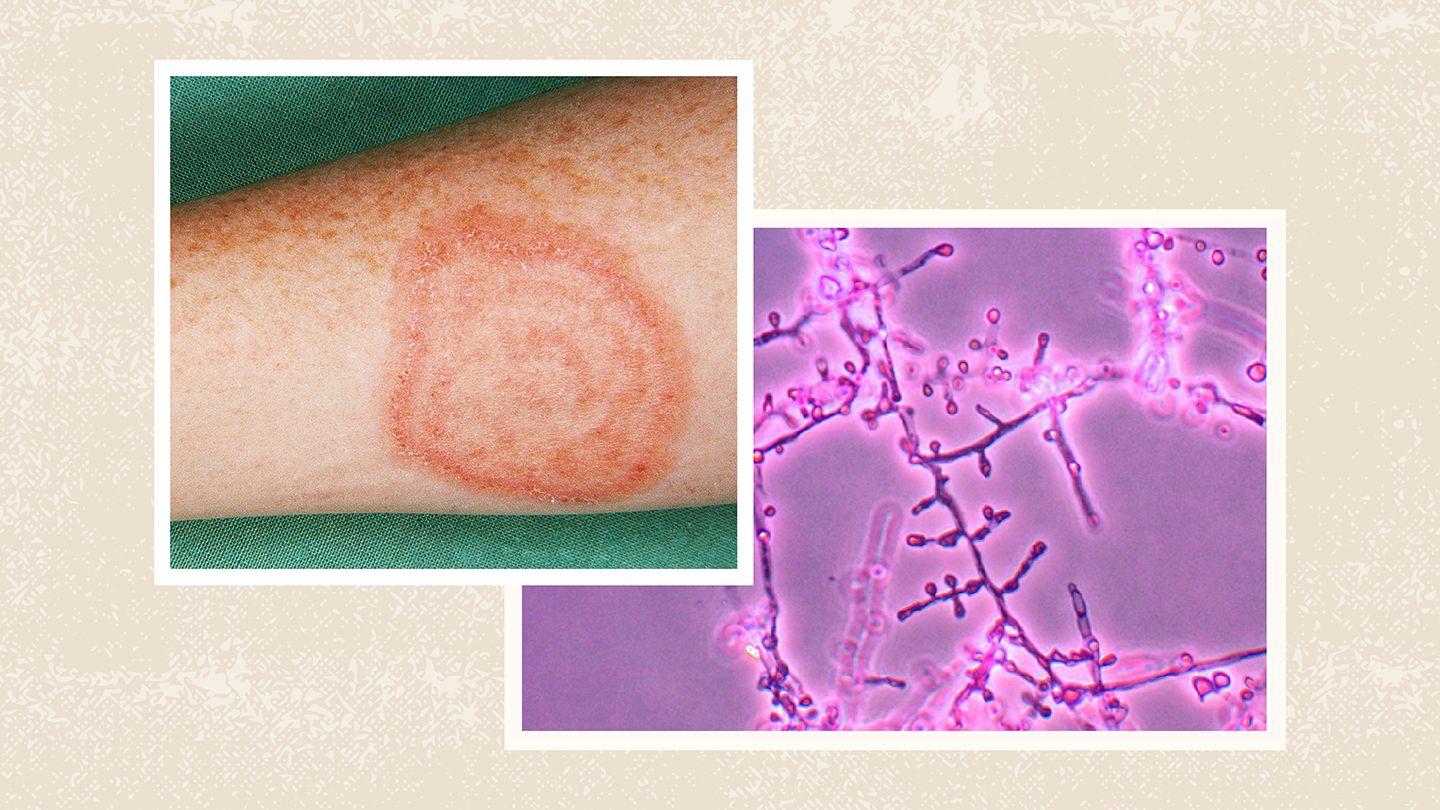The first cases of a highly contagious, drug-resistant ringworm infection have been detected in the United States, in New York City. In a recent report published by the Centers for Disease Control and Prevention (CDC), doctors warned that this type of severe ringworm infection (also called tinea) is caused by a relatively new form of fungus called Trichophyton indotineae, which does not respond to common antifungal treatments.
Infection from the fungus produces an inflamed, itchy, scaly rash that can appear on the groin (jock itch), feet (athlete’s foot), and scalp.
Ringworm doesn’t have anything to do with worms, but is so named because it can produce a circular rash shaped like a ring.
Although just two cases of this infection have so far been identified, in two women, public health officials are concerned that the infection may spread to others as an epidemic of this severe, drug-resistant tinea has emerged in South Asia over the past decade. Scientists studying the condition suspect that the fungus may have become drug-resistant due to the misuse and overuse of topical antifungal treatments and corticosteroids (anti-inflammatory medications).
“Dermatologists in India and elsewhere have been alerting us to this infection as it has spread globally,” says Avrom S. Caplan, MD, assistant professor of dermatology at NYU Grossman School of Medicine in New York City, and lead author of the new CDC report. “It is highly resistant to one of our first-line oral antifungal medications, and some strains abroad have shown decreased responsiveness to other drugs.”
What Are the Signs of Ringworm and How Do You Treat It?
Four major symptoms of ringworm are itchy skin; ring-shaped rash; inflamed, scaly, and cracked skin; and hair loss, according to the CDC. Irritated spots can crust over and fill with pus. The infection can also affect nails, says the CDC, causing them to become discolored, thick, fragile, or cracked.
The CDC says that many cases of ringworm can be successfully treated with over-the-counter, nonprescription antifungal creams, lotions, or powders. For more serious infections, stronger prescription medications may be required.
Both women in these recent cases were initially prescribed oral terbinafine, which works by stopping the growth of fungi. When that wasn’t successful, doctors prescribed other oral medications that may be used for more serious infections (itraconazole and griseofulvin).
While effective antifungal medications are available to treat this aggressive infection, Dr. Caplan stresses that overuse of these treatments may be allowing fungi to evolve and become resistant to some common therapies.
How Worried Should People Be About Drug-Resistant Ringworm?
Because the new drug-resistant fungus is predominant in south Asia, people who have traveled to that area and develop a ringworm-like rash may want to take extra care and have their skin tested.
Caplan and his colleagues noted, however, that one of the two cases identified was a woman who had no history of international travel, suggesting the infection could have been transmitted “locally.”
“The fact that there’s this one case in the U.S. in a woman who had no history of travel to India or Asia should raise clinicians’ eyebrows a bit — it suggests that this may be something that we could potentially see more of in the U.S.,” says Dean Winslow, MD, an infectious-disease specialist and a professor of medicine at Stanford University in California.
Caplan also believes more cases will appear, but he doesn’t think the situation at this time is cause for alarm.
“Our report should help clinicians identify clinical features and understand challenges in treatment and testing of this particular infection,” he says. “But I don’t think the public should be concerned at this time.”
How to Stop the Spread of Ringworm
Those who have ringworm of any type need to take precautions to avoid spreading this highly contagious fungus, according to Dr. Winslow.
“Ringworm spreads easily from person to person,” he says. “A commonly heard story is picking up athlete’s foot in the shower. The fungus can persist, for at least short periods of time, on inanimate objects.”
The American Academy of Dermatology offers a list of tips to help those with the rash from spreading it to others, including wearing waterproof sandals or shoes in a public shower, changing clothes every day, and avoiding sharing personal items, such as towels.

